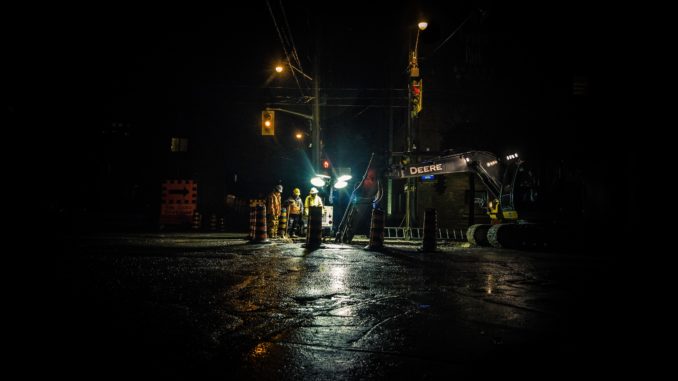
By Megan Castle, COGCC Communications Officer
[email protected], cell: (303) 513-2713
Twitter: @ColoradoOGCC
Colorado Oil & Gas Conservation Commission completes the first rulemaking under SB 19-181
COGCC adopts new flowline rulemaking to increase public safety
The Colorado Oil and Gas Conservation Commission (COGCC) today announced that the Commissioners adopted new protective flowline rules during its hearing, held in Greeley. SB 19-181 directed the Commission to complete four rulemakings by July 1, 2020, and the flowline rulemaking is the first to be completed.
“We are very proud to have completed SB 19-181’s first required rulemaking, which is on the critically important topic of flowlines, as part of COGCC’s new mission to regulate oil and gas in a protective manner of public health, safety, the environment and wildlife,” said Dan Gibbs, Director, Colorado Department of Natural Resources and Chair of the COGCC “I was proud to join the other Commissioners to adopt rules that provide greater transparency for the public and communities on where flowlines are located and enhanced protective measures on abandoning or where appropriate, removing flowlines to ensure public safety.”
SB 19-181 directed the Commission to engage in rulemaking that will “allow the public disclosure of flowline information” and evaluate and determine when a deactivated flowline must be inspected before being reactivated in addition to considering its inactive well and flowline rules.
Today’s rulemaking further strengthens the state’s oversight of flowlines and operators returning inactive wells to production or injection within Colorado. At the COGCC Hearing, the Commission adopted flowline rulemakings to increase the protections to the public by:
-
Creating for the first time a map of the actual paths of all flowlines in the state of Colorado, while at the same time balancing the need for public safety. The mapping is intended to provide general information that enables someone to contact the operator or Colorado 811. It is important, as the testimony reflected, that the COGCC map is not the sole source of information about underground facilities and should not be understood to be a substitute for calling 811 before excavating in and near flowlines.
-
Ensuring flowlines are abandoned in a manner that is least impactful, which balances the varying ways in which abandonment – whether in place or through removal – creates impacts or risks to public health, safety, welfare, the environment, or wildlife resources.
“The COGCC has committed to an open, transparent rulemaking process that engages all stakeholders,” said COGCC Director Jeff Robbins. “We worked with environmental, industry, local government, homeowners and other stakeholders from across the state in a collaborative manner to arrive at sensible solutions that will deliver stronger protections and more accurate and publicly available mapping information, and help to increase public safety as a result of this flowline rulemaking”
The Commission adopted the proposed amendments during its hearing, Nov. 19-21. These amendments will become effective, twenty days after publication in the Colorado Register.
SB 19-181 ensures that oil and gas development and operations in Colorado are regulated in a manner that protects public health, safety, welfare, the environment and wildlife resources. The COGCC is in the midst of reviewing its rules and procedures to evaluate what changes are required to reflect the new law’s requirements.
COGCC’s December Hearing will be held in Denver. To learn more about the flowline rules, participate in any meetings, the rulemaking schedule, or comment using the online portals, visit the COGCC website: www.colorado.gov/cogcc.
Note the following definitions of key terms from COGCC rulemaking:
Pipeline: a flowline, crude oil transfer line or gathering line as defined in these Rules.
Gathering line: a gathering pipeline or system as defined by the Colorado Public Utilities Commission (COPUC), Regulation No. 4, 4 C.C.R. 723-4901, Part 4, (4 C.C.R. 723-4901) or a pipeline regulated by the U.S. Department of Transportation Pipeline and Hazardous Materials Safety Administration pursuant to 49 C.F.R. §§ 195.2 or 192.8.
Flowline: a segment of pipe transferring oil, gas, or condensate or produced water between a wellhead and processing equipment to the load point or point of delivery to a DOT-PHMSA or COPUC regulated gathering line or a segment of pipe transferring produced water between a wellhead and the point of disposal, discharge, or loading.
Crude oil transfer line: a piping system that is not regulated or subject to regulation by the U.S. Department of Transportation Pipeline and Hazardous Materials Safety Administration (PHMSA) pursuant to 49 C.F.R. § 195 Subpart A, and that transfers crude oil, crude oil emulsion or condensate from more than one well site or production facility to a production facility with permanent storage capacity greater than 25,000 barrels of crude oil or condensate or a PHMSA gathering system.
Support Northern Colorado Journalism
Show your support for North Forty News by helping us produce more content. It's a kind and simple gesture that will help us continue to bring more content to you.
BONUS - Donors get a link in their receipt to sign up for our once-per-week instant text messaging alert. Get your e-copy of North Forty News the moment it is released!
Click to Donate

3 Trackbacks / Pingbacks
Comments are closed.